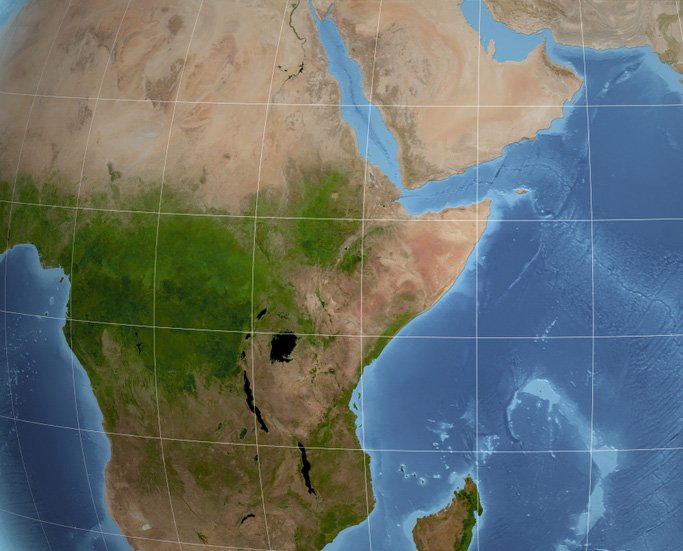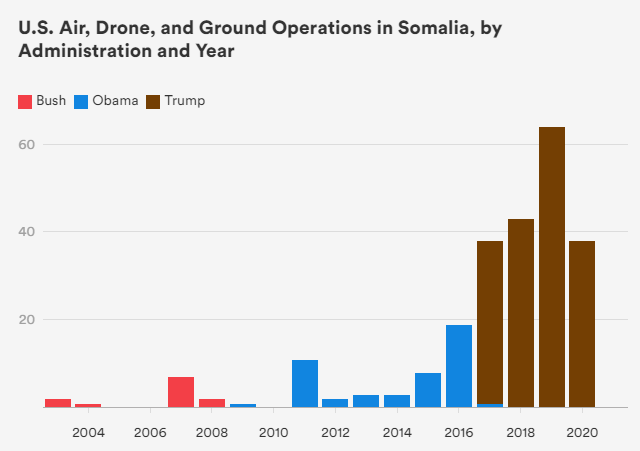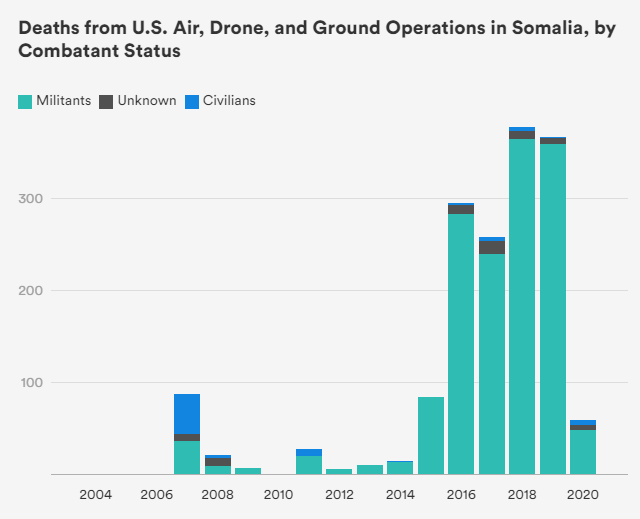New Alleged Civilian Casualties in Somalia Puts U.S. AFRICOM in the Hot Seat
Blog Post

April 7, 2020
United States Africa Command conducted its 38th strike of 2020 in Somalia on Monday, reportedly killing five al-Shabaab terrorists, according to New America data. At least 60 people have died from these 38 strikes, but while AFRICOM asserts all strikes this year have only killed al-Shabaab terrorists, human rights groups and local reports argue that several instances were actually civilian deaths.
One of those cases was a strike on February 2, 2020. A report by Amnesty International indicates that at least two civilians were killed and three others were injured while sharing a family meal together in the southern town of Jilib. Another AFRICOM strike took place on February 24, 2020, allegedly killing a 53-year-old banana farmer and local telecom official. Hormuud, the man’s employer and Somalia’s largest telecommunications company, confirmed his death. In each related press release issued by AFRICOM, the U.S. claims one al-Shabaab militant was killed as a result of the strike. Then, two weeks later, another strike was conducted in Janaale, Lower Shabelle on March 10. In that press release, AFRICOM maintained that five al-Shabaab terrorists were killed, but local reports said those targeted were civilians. According to a report by The Intercept, the airstrike hit a mini-bus taxi, killing up to six, including a young boy on his way to school.
Part of the increase in alleged civilian casualties can be explained by U.S. policy. President Trump replaced the Obama administration’s Presidential Policy Guidance (PPG) with the PSP or Principles, Standards and Procedures in 2017. While many parts of the PSP are not very different from the PPG, President Trump changed some air and drone strike policies, such as expanding the ability of the military to track and kill alleged terrorists outside traditional war zones, and reducing the number of assessments required before conducting a drone strike. However, on March 31, AFRICOM announced a new initiative that would report on civilian casualties quarterly. In the press release, U.S. AFRICOM commander General Stephen Townsend said, “To demonstrate our transparency and commitment to protecting civilians from unnecessary harm, we plan to publicize our initial report by the end of April and we will provide quarterly updates thereafter.”
Recent U.S. strikes are a response to al-Shabaab attacks on United States targets and troops in Somalia. According to an AFRICOM press release on February 24, 2020, “Al-Shabaab leadership has expressed its primary desire is to conduct attacks not just in East Africa, but against Americans and U.S. interests across the globe.” In September 2019, al-Shabaab successfully carried out an attack on Baledogle Military Airfield, a U.S.-Somali base. AFRICOM reported no casualties as a result of that strike. Then, on January 5, 2020, al-Shabaab attacked a military base in Manda Bay, Kenya that is shared with U.S. forces along the Somalia border. Three Americans died in that attack, in addition to two wounded and six damaged civilian aircraft.
What appears to be an unmatched rise in airstrikes across the country by AFRICOM is a trend the Trump administration has carried throughout the last three years. In President Trump’s first year in office, AFRICOM conducted 37 strikes in Somalia, killing at least 241 terrorists (at least another 19 were either unknown deaths or civilian deaths). The next year, 43 strikes were conducted and at least 366 terrorists were killed – in addition to another 13 who were either civilians or the identity of the individuals was unknown. In 2019, a record 64 strikes were conducted, which killed at least 360 terrorists, and eight civilians or unknown. As of April 6, the strike count for 2020 is more than half the total for all of 2019. These strikes resulted in 60 deaths, 11 of which are unknown or civilians. (See Figures 1 and 2 below for reference.)

